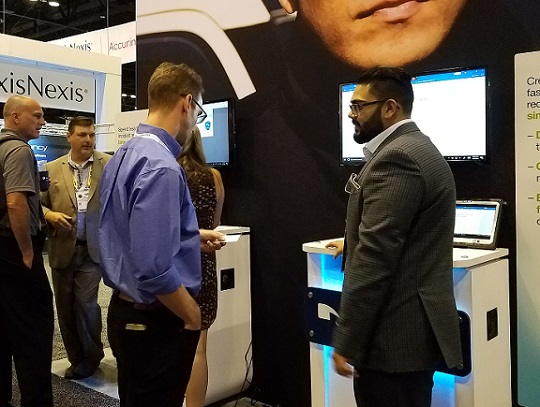Police technology is advancing rapidly and following a similar trajectory to other industries that rely on moving mission-critical information. This year’s International Association of Chiefs of Police (IACP) highlights three key trends we see shaping how documentation gets done in policing.
My team and I had the opportunity to meet and review our collective impressions of the major themes, takeaways, and trends in police technology after attending the International Association of Police Chiefs (IACP 2018) conference earlier this month. My last IACP blog highlighted the excitement felt by law enforcement professionals, who are quickly embracing new policing tools. In this blog, I wanted to share the three key trends we see emerging within police technology, specific to documentation and police reporting.
Police tech is migrating to the cloud
Only two years ago, almost all our conversations surrounding software deployments – notably within Computer Aided Dispatch and Records Management systems (CAD and RMS) – were focused on “on-premise” deployments and keeping data contained within the department. Transacting any data to the cloud was often met with skepticism and concerns over security. This year, as many of our fellow exhibitors demonstrated, the skepticism for cloud-based solutions is dissolving. The adoption of best-of-breed cloud-based platforms and protocols designed for the public sector will continue to accelerate the adoption of, and demand for, cloud technology in policing.
AI-powered solutions in police tech have arrived
Whether it’s employed to detect the precise location of gunfire, predict “hot spots” of crimes before they occur, or used in speech recognition solutions – like Dragon Law Enforcement – to accurately predict the next spoken words in a sentence, Artificial Intelligence has made its mark in police technology. As the universe of potential data shared and available to “mine” (thanks in no small part to cloud computing) accelerates, powerful algorithms and deep learning technology will continue to be employed to find “signals” in even unstructured data, find patterns and connect the dots. One of the most positive outcomes: more intuitive ways to bring criminals to justice.
Police want smarter tools to get reporting done
We saw lots of interest and excitement surrounding our police reporting tools during the show. We know, from conversations with law enforcement and recent surveys, that officers are seeking smarter tools to meet the growing reporting demands of their jobs. In the realm of documentation, this means being able to automate, route and package information – like victim statements, photographs, interviews, mandated forms and audio/video files – that comprise a discreet “event,” like a single incident report, faster, accurately and more efficiently. Technology, like our speech recognition and workflow solutions, that can help streamline reporting and reduce documentation bottlenecks will continue to be in high demand within public safety, as it already is within other document-intensive industries.
My team and I are honored to play a small role in shaping the new police technology that has evolved rapidly in the last few years, and we look forward to opportunities to help the women and men in blue leverage these smart tools in the coming years.






